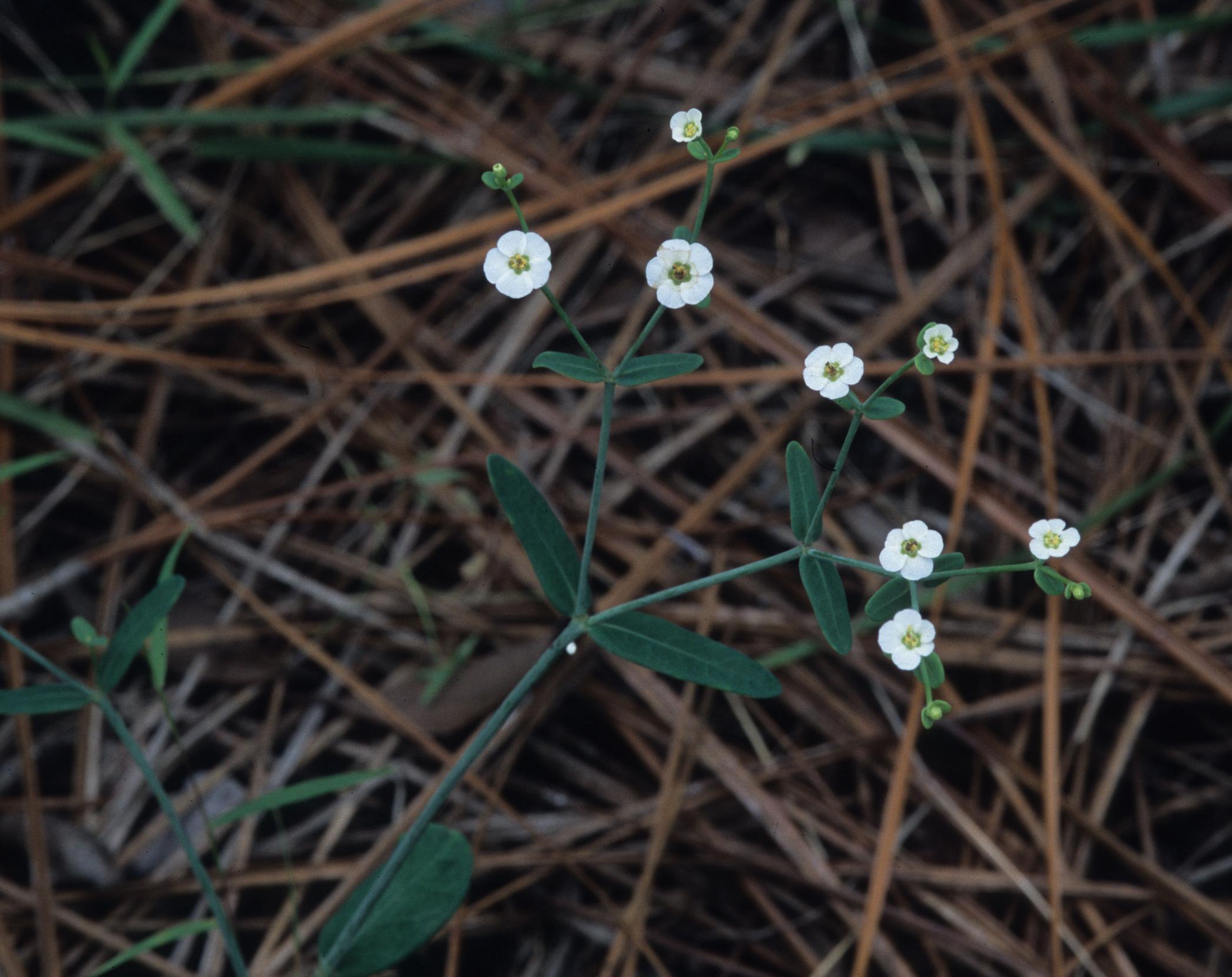Difference between revisions of "Euphorbia pubentissima"
HaleighJoM (talk | contribs) (→Ecology) |
|||
| Line 41: | Line 41: | ||
<!--===Seed bank and germination===--> | <!--===Seed bank and germination===--> | ||
<!--===Fire ecology===--> <!--Fire tolerance, fire dependence, adaptive fire responses--> | <!--===Fire ecology===--> <!--Fire tolerance, fire dependence, adaptive fire responses--> | ||
| − | <!--===Pollination and | + | <!--===Pollination===--> |
| + | <!--===Herbivory and toxicology===--> | ||
<!--===Diseases and parasites===--> | <!--===Diseases and parasites===--> | ||
Revision as of 15:43, 30 June 2022
| Euphorbia pubentissima | |
|---|---|

| |
| Photo was taken by Gil Nelson | |
| Scientific classification | |
| Kingdom: | Plantae |
| Division: | Magnoliophyta - Flowering plants |
| Class: | Magnoliopsida – Dicotyledons |
| Order: | Euphorbiales |
| Family: | Euphorbiaceae |
| Genus: | Euphorbia |
| Species: | E. pubentissima |
| Binomial name | |
| Euphorbia pubentissima Michx. | |

| |
| Natural range of Euphorbia pubentissima from USDA NRCS Plants Database. | |
Common names: False flowering spurge; Southeastern flowering spurge
Contents
Taxonomic notes
Synonyms: Agaloma pubentissima (Michaux) D.B. Ward; E. apocynifolia Small; E. corollata Linnaeus var. corollata; E. corollata var mollis Millspaugh; E. corollata var. paniculata Boissier; E. corollata Linnaeus var. zinniiflora (Small) H.E. Ahles; E. zinniiflora Small; Tithymalopsis apocynifolia (Small) Small; T. paniculata (Boissier) Small; T. zinniiflora (Small) Small.[1]
Varieties: none.[1]
Description
Distribution
Ecology
Habitat
This species is found in mesic wooded slopes of a ravine and nature parks.[2]
E. pubentissima was found to decrease its occurrence in response to soil disturbance by agriculture in southwest Georgia. It has shown resistance to regrowth in reestablished native savanna habitat that was disturbed by agricultural practices.[3]
Phenology
E. pubentissima has been observed flowering in October, after a prescribed burn in July, at Pebble Hill Plantation, Grady County, GA by Michelle M. Smith. It has also been observed flowering in May, September, and November.[4]
Seed dispersal
This species is thought to be dispersed by ants and/or explosive dehiscence. [5]
Conservation, cultivation, and restoration
Cultural use
Members of this genus can be used as a laxative in small amounts, but an overdose can cause severe poisoning.[6]
Photo Gallery
References and notes
- ↑ 1.0 1.1 Weakley, A.S. 2015. Flora of the southern and mid-atlantic states. Working Draft of 21 May 2015. University of North Carolina at Chapel Hill, Chapel Hill, North Carolina.
- ↑ Florida State University Robert K. Godfrey Herbarium database. URL: http://herbarium.bio.fsu.edu. Last accessed: June 2014. Collectors: Robert K. Godfrey. States and Counties: Florida: Gadsden.
- ↑ Kirkman, L.K., K.L. Coffey, R.J. Mitchell, and E.B. Moser. Ground Cover Recovery Patterns and Life-History Traits: Implications for Restoration Obstacles and Opportunities in a Species-Rich Savanna. (2004). Journal of Ecology 92(3):409-421.
- ↑ Nelson, G. PanFlora: Plant data for the eastern United States with emphasis on the Southeastern Coastal Plains, Florida, and the Florida Panhandle. www.gilnelson.com/PanFlora/ Accessed: 9 DEC 2016
- ↑ Kirkman, L. Katherine. Unpublished database of seed dispersal mode of plants found in Coastal Plain longleaf pine-grasslands of the Jones Ecological Research Center, Georgia.
- ↑ Mueschner, W.C. 1957. Poisonous Plants of the United States. The Macmillan Company, New York.